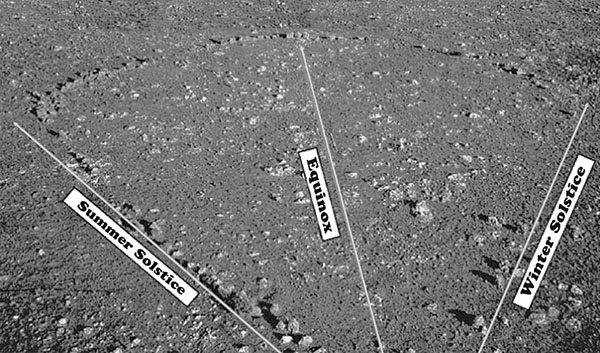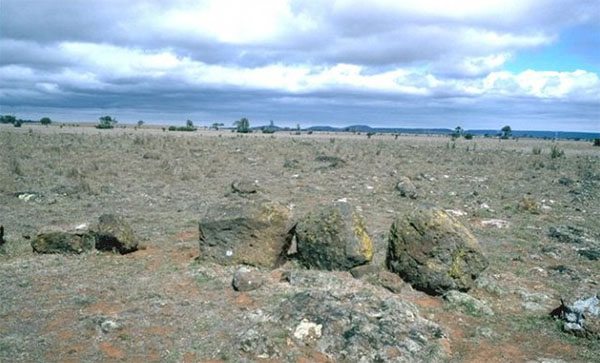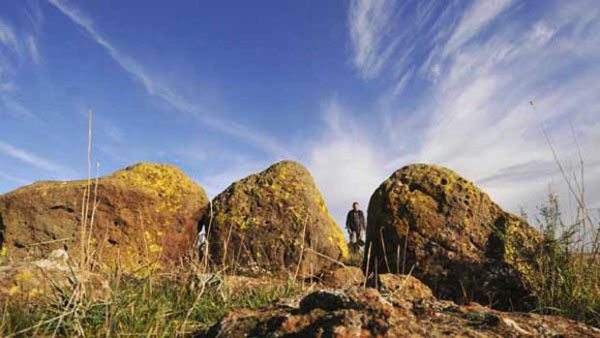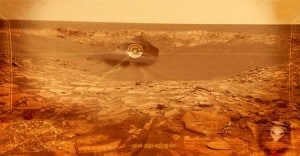A team of researchers are currently investigating the remains of an archaic astronomic observatory that could predate Stonehenge by nearly 6,000 years.
New evidence uncovered by the researchers suggests the Wurdi Youang rock formation could be recognized as the world’s first astronomical observatory. Today, about 90 blocks of basalt remain standing, but with an estimated age of 11,000 years, it’s a wonder so many made it.
According to the Commonwealth Scientific and Industrial Research Organisation (CSIRO), the Wurdi Youang stone arrangement was built by the Wathaurung people long before European settlement but no records of its use can be located. The arrangement is located about 30 miles west of Melbourne and consists of an egg-shaped row of stones with a diameter of about 165 feet. Its major axis follows the Sun’s movement in the sky. At its western end, there are three prominent stones that correspond to the Sun’s setting position at the solstices and equinoxes.

In 2008, CSIRO astrophysicist and Aboriginal astronomy researcher Ray Norris referred to Wurdi Youang as the “Aboriginal Stonehenge with a question mark.” Eight years later, the astronomical hypothesis is confirmed and with a twist: the observatory in Australia was already 6,000 years old when the Celts started construction on the one that’s probably your wallpaper right now.
I think the question we might have to ask is: is Stonehenge Britain’s version of Wurdi Youang? Because this could be much, much older.”
“The area has been occupied by the Wathaurong hunter-gatherer Aboriginal people from about 25000 BC until their culture was destroyed in about 1835,” Norris wrote. “Since then, the area has been farmed by European settlers, although the Wurdi Youang site itself has been untouched.”

Except by time. Time touches all.
Leading the current study was Dr. Duane Hammacher, who is a notable figure in the field of Indigenous astronomy. He has been working with Aboriginal elders to piece together what information is available about the mysterious Wathaurung people. They believe the early Australians had a profound understanding of the movement of celestial objects. It’s fun to ponder where they got it.
“They understand very well the motions of the sun, the moon, the planets and the stars throughout the year and over longer periods of time,” Dr. Hammacher said.
“White Australians don’t generally recognize that the history of colonialism has erased that, so what we’re doing is helping the communities piece that information back together by working with communities.”
Agriculture is about 12,000 years old and if the Wurdi Youang observatory is indeed 11 millennia old, it therefore means the ancient Australians were at the forefront of the agricultural revolution. Building a structure that is intended to indicate the passing of the seasons would be of great use to a farming community. Dr. Hammacher agrees with this hypothesis:
The custodians have found evidence of agricultural terraces and stone villages, which turn on its head the idea of the nomadic Aboriginal.
Custodian Reg Abrahams has been protecting the arrangement for enough time to get a sense of these ancient peoples’ impressive achievements.

Here he is, acknowledging the fact this site is bigger than (a) man.
“If you’re going to have a stone arrangement where you mark off the seasons throughout the year with the solstices and equinoxes, it kind of makes sense if you’re at least most of the year in one specific location to do that,” he said.
“So if that’s the case, it would make sense if you’re near permanent food and water sources.”
Archaeologists digging in the area have discovered areas where eel traps were set in the very distant past. A number of gilgies (farming terraces) were also located in the region, further ingraining the idea that ancient Australians had a lot of things going on for them. Custodian Abrahams concurs:
“You see a lot of agricultural and aquacultural practices, so evidence of this agriculture may go back tens of thousands of years, pre-dating what anthropologists commonly think of as the dawn of agriculture which is about 11,000 years ago in Mesopotamia.”









